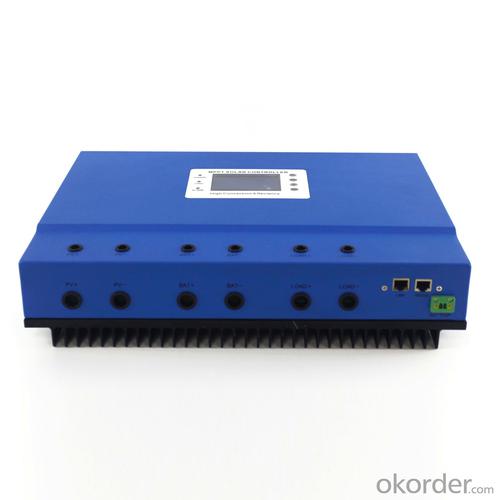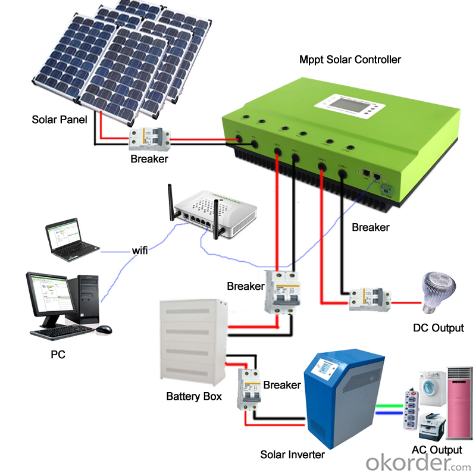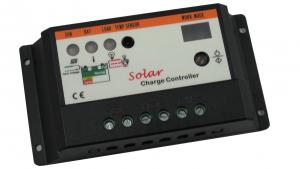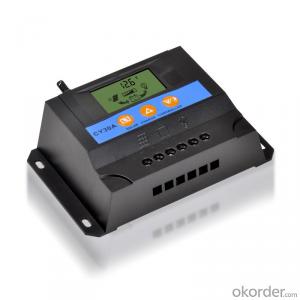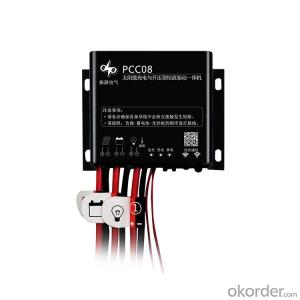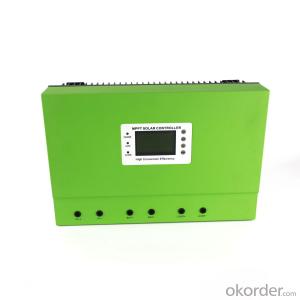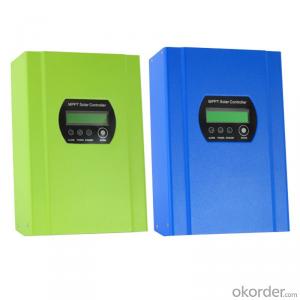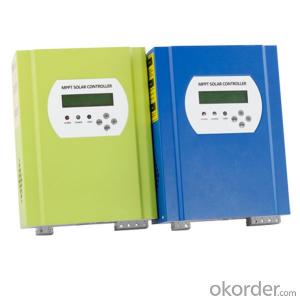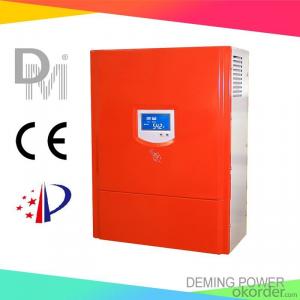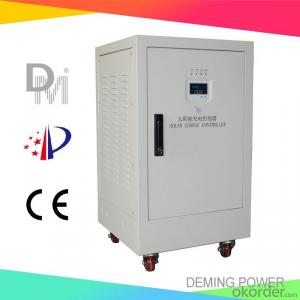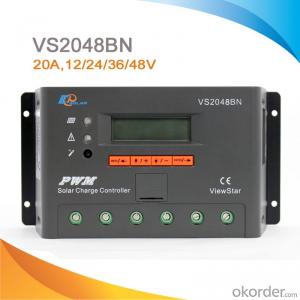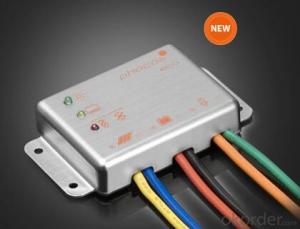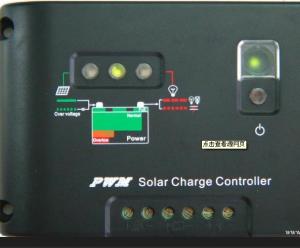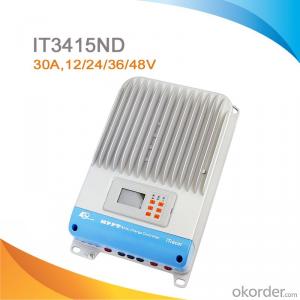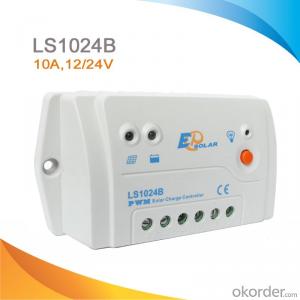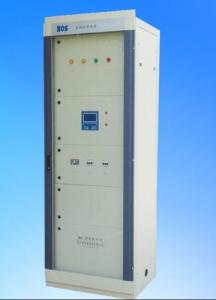Leading Solar Controllers Master100A MPPT Solar Regulator, 12V 24V 36V 48V Charge Controller 4000W
- Loading Port:
- China main port
- Payment Terms:
- TT OR LC
- Min Order Qty:
- 10 unit
- Supply Capability:
- 9999 unit/month
OKorder Service Pledge
OKorder Financial Service
You Might Also Like
High efficient MPPT 48v 100a solar charger controller
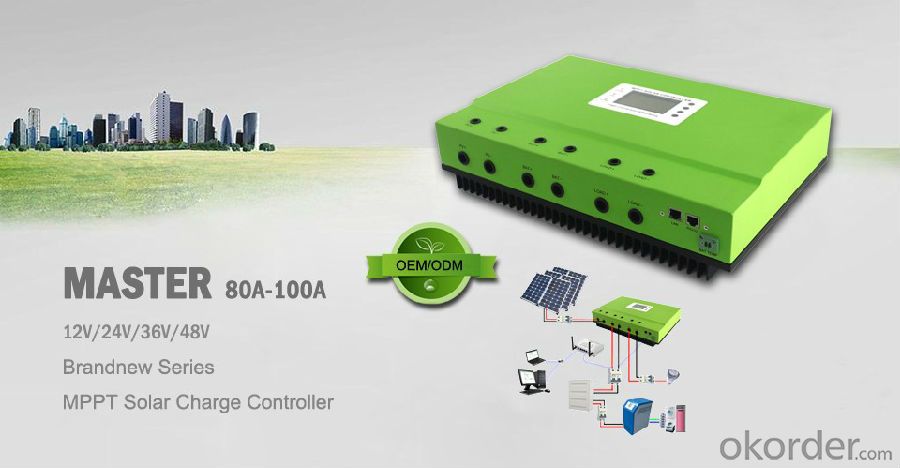
Products Advantages
1. MPPT charge mode,conversion efficiency up to 99%;
2. Maximum PV input is DC 150V;
3. Support all kind of batteries, non-normal type can be set on PC software;
4. Three stage charge mode: fast charge,constant charge,floating charge);
5. With temperature sensor;
6. Anderson connection port, avoide reverse connection;
7. RS232 and LAN communication port, free PC software;
8. Intelligent design,the device can be upgraded online;
9. The devices can suffer the temperature not less than 105°C;
10. Perfect protection:input lowvoltage,input overvoltage,input polarity reversal,
output over voltage,short-circuit over temperature;
11. Unlimited parallel;
12. 5 discharge mode;
13. LCD and LED show all kinds of parameter;
14. CE,ROHS,FCC certifications approved.The device also can support to pass the other certifications;
15. 2 years warranty and 3~10 years extended warranty service also can be provided.
Connection Diagram
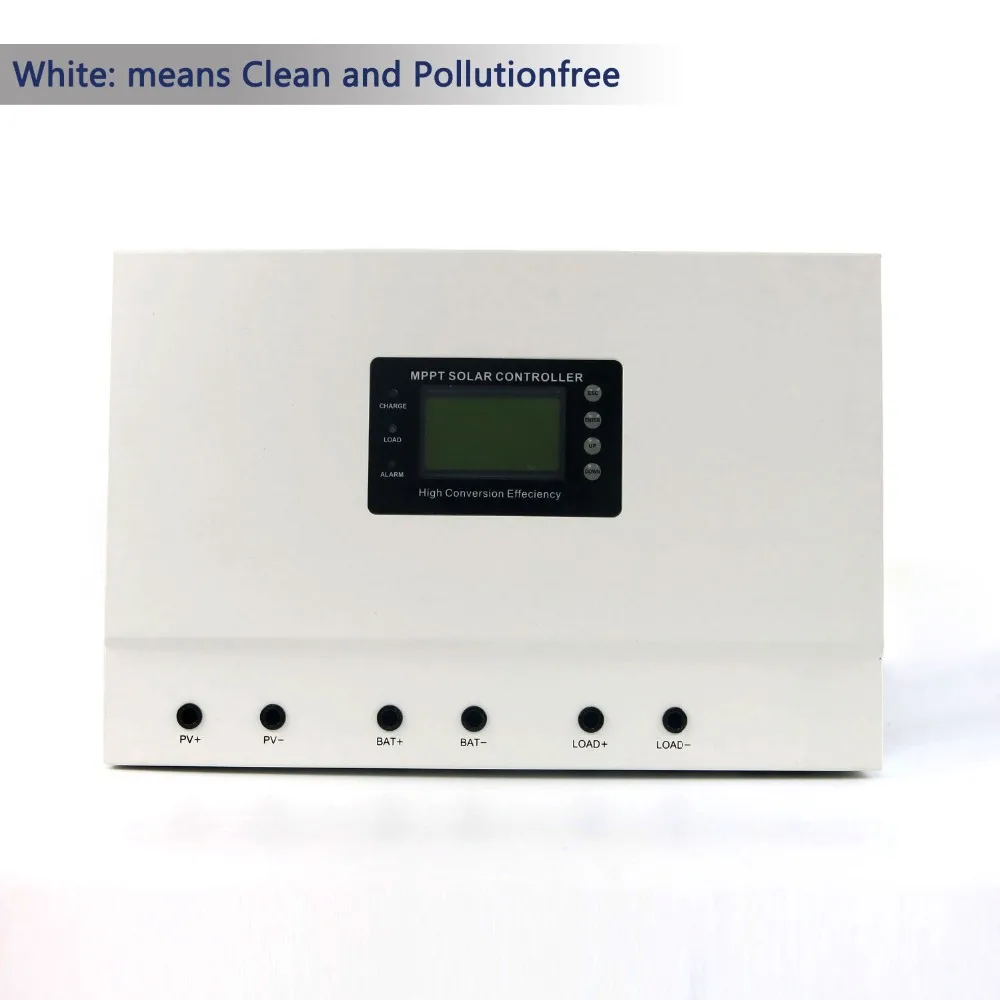
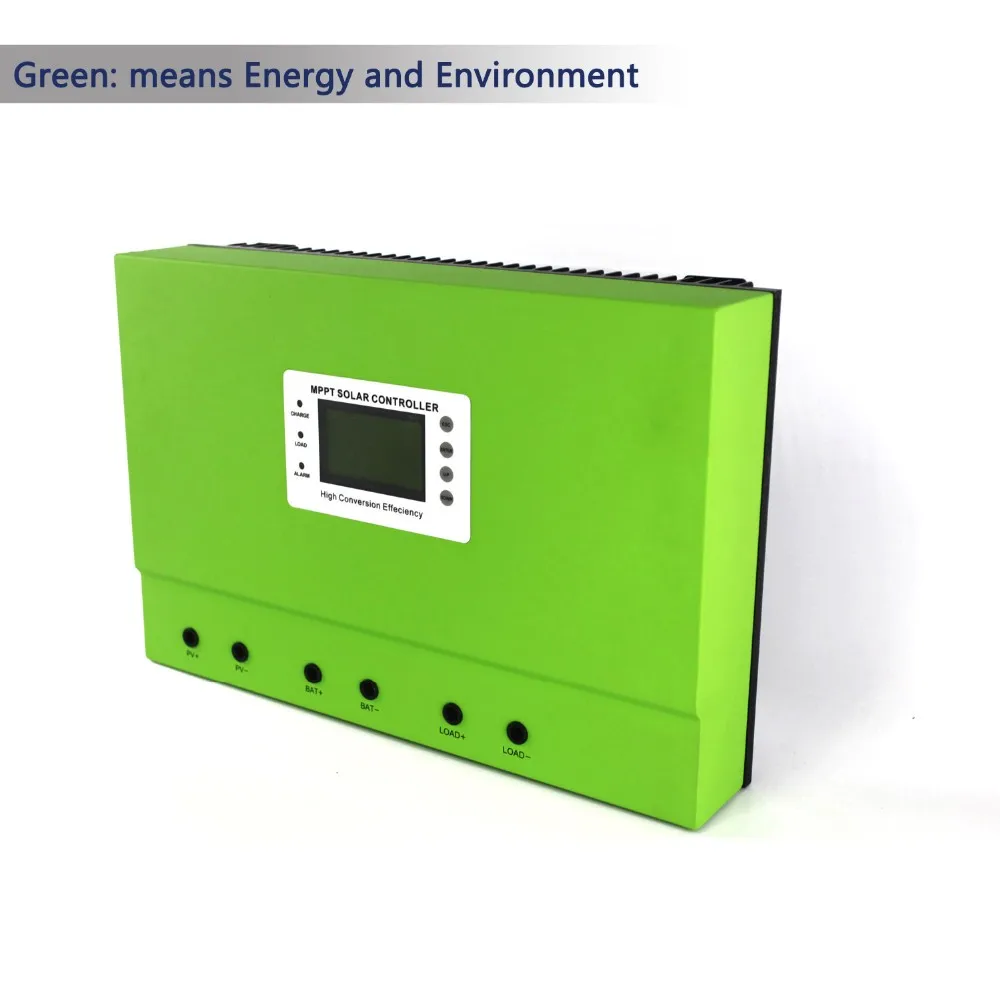

Upper PC Software
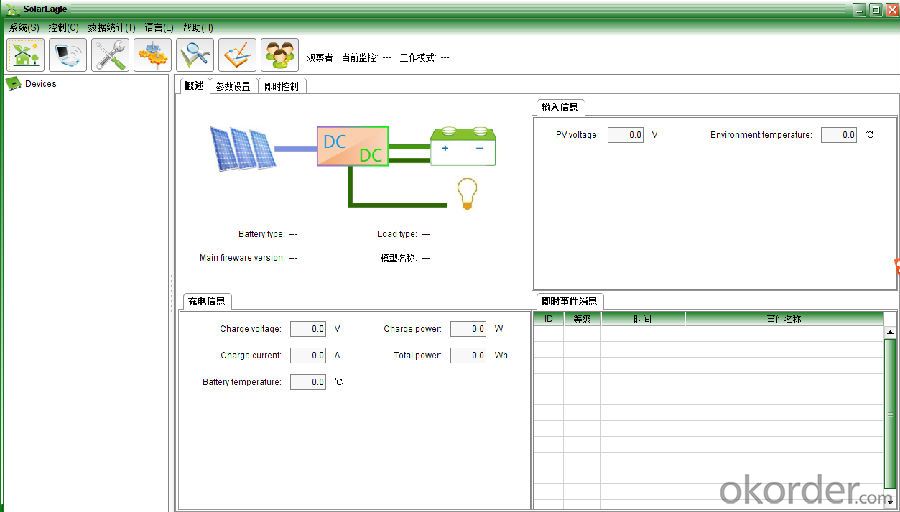
Test Software
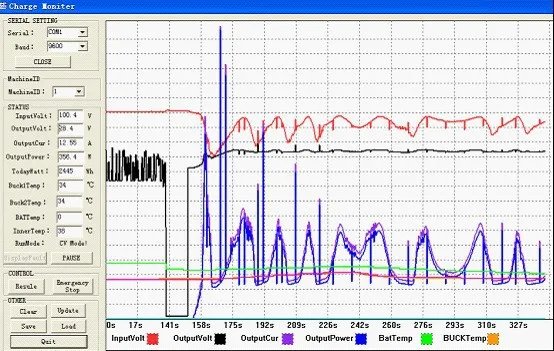
Parameter
MPPT controller Model: Master1-80A/100A Series | 80A | 100A | |
Charge Mode | MPPT(Maximum Power Point Tracking) | ||
Charge Method | 3 stages: fast charge(MPPT),constant voltage, floating charge | ||
System Type | DC12V/24V/36V/48V | Automatic recognition | |
Conversion Efficiency | DC12V/24V/36V/48V | 96.5% ~99% | |
PV Modules Utilization Rate | DC12V/24V/36V/48V | ≥99% | |
PV Input Characteristics | |||
MPPT Working Voltage and Range | 12V system | DC22V~DC150V | |
24V system | DC34V~DC150V | ||
36V system | DC50V~DC150V | ||
48V system | DC60V~DC150V | ||
Input Over voltage Protection Point | DC12V/24V/36V/48V | DC150V | |
Rate charge current | DC12V/24V/36V/48V | 80A | 100A |
Max. PV Power | 12V system | 960W | 1200W |
24V system | 1920W | 2400W | |
36V system | 2880W | 3600W | |
48V system | 3840W | 4800W | |
Charge characteristic | |||
Selectable Battery Types (Default type is GEL battery) | DC12V/24V/36V/48V | Sealed lead acid, vented Gel, NiCd battery (Other types of the batteries also can be defined) | |
Temperature Compensation | DC12V/24V/36V/48V | 14.2V-(The highest temperature-25℃)*0.3 | |
Discharge characteristic | |||
Setting Control | Controller or PC software | ||
Max discharge current | DC12V/24V/36V/48V | 100A | |
Output control mode | Double-time control, ON/OFF mode, PV voltage control, PV&Time control | ||
Physical | |||
Communication Port | RS232 and LAN | ||
Measurement D*W*H (mm) | 420*280*102 | ||
N.G(kg) | 7.5 | ||
G.N(kg) | 8.5 | ||
Color | Blue, Green, White (optional) or OEM | ||
Environment | |||
Humidity | 0~90%RH ( no condense) | ||
Altitude | 0~3000m | ||
Operating Temperature | -20℃ ~ +40℃ | ||
Storage Temperature | -40℃ ~ +75℃ | ||
Atmospheric Pressure | 70~106kPa | ||
Certifications |
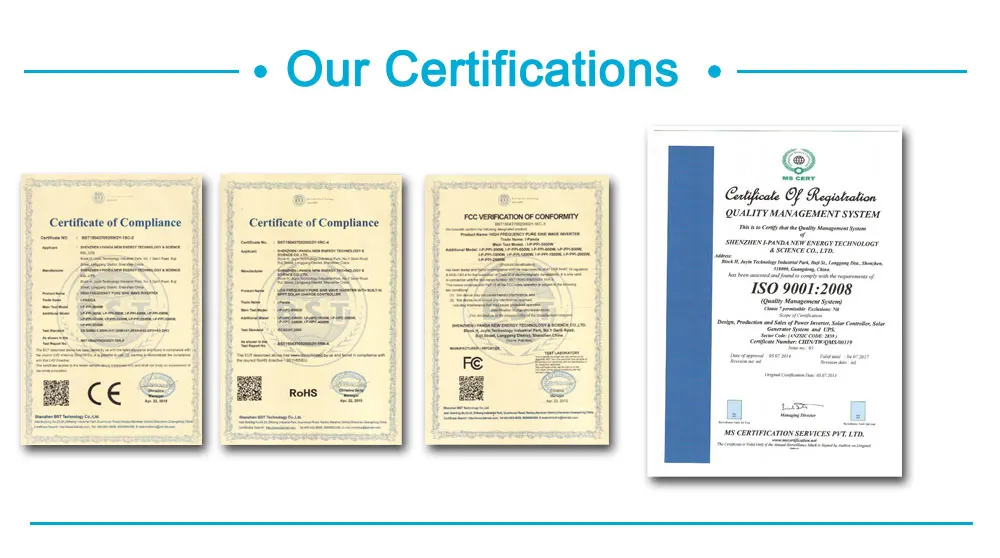
F&Q: |
Q1. How to ensure and monitor the products quality?
A1: We have established a perfect Quality Management System, In strict
accordance with ISO9001: 2008 quality system and ISO14001 environment system for quality assurance management;
Our ISO9001:2008 Quality System certificate encoding: CHIN/TW/QMS/00119;
Our ISO14001 Environment System certificate encoding: CHIN/TW/EMS/00028;
Q2. What is the warranty of products?
A2: The warranty period of different products are different; 5 years, 3 years, 2 years, 1 years; More details please refer to the product specification or manual; we will provide free life-long technical support ;
Q3. What is the difference between MPPT&PWM?
A3. MPPT charging mode, peak efficiency up to 99%, saving 30%~60% solar panel than traditional PWM controller.
- Q: Can a solar controller be used with solar panels in parallel or series configuration?
- Yes, a solar controller can be used with solar panels in both parallel and series configurations. The solar controller regulates and monitors the flow of electricity from the solar panels to the battery or power grid, regardless of how the panels are connected.
- Q: Can a solar controller be used with other renewable energy sources?
- Yes, a solar controller can be used with other renewable energy sources. Solar controllers are designed to regulate the charging and discharging of batteries in solar power systems, but they can also be used to manage the charging process of batteries in conjunction with other renewable energy sources like wind or hydro power. By integrating a solar controller into a hybrid renewable energy system, the charging process can be optimized and the batteries can be effectively utilized, increasing the overall efficiency and reliability of the system.
- Q: What is the purpose of the battery deep discharge protection feature on a solar controller?
- The purpose of the battery deep discharge protection feature on a solar controller is to prevent the battery from being discharged below a safe level. This feature helps to prolong the battery's lifespan and prevent damage to the battery cells. It also ensures that there is always enough charge remaining in the battery to power the connected devices or appliances.
- Q: How do I prevent short-circuiting with a solar controller?
- To prevent short-circuiting with a solar controller, there are a few measures you can take. Firstly, ensure that the wiring connections are secure and properly insulated to prevent any accidental contact or exposure. Additionally, make sure to use the correct gauge of wire suitable for the current being carried. Regularly inspect the controller and panels for any signs of damage or wear, and replace any faulty components immediately. Finally, follow the manufacturer's guidelines and instructions for installation and maintenance, as they will typically provide specific measures to prevent short-circuiting.
- Q: Can a solar controller be used with a wind turbine?
- No, a solar controller cannot be directly used with a wind turbine. Each type of renewable energy source requires a specific controller designed to handle the unique characteristics and needs of that particular source.
- Q: Can a solar controller be used with a battery bank that is connected in parallel?
- Yes, a solar controller can be used with a battery bank that is connected in parallel. In a parallel connection, the positive terminals of all the batteries are connected together, and the negative terminals are connected together. This setup allows for increased capacity and current output. A solar controller regulates the charging of the batteries from the solar panels, ensuring that they are not overcharged or damaged. So, as long as the solar controller is compatible with the battery bank's voltage and capacity, it can effectively manage the charging process in a parallel connection.
- Q: How do I calculate the maximum load output current for a solar controller in a grid-tied system?
- In order to determine the maximum load output current of a solar controller in a grid-tied system, several factors need to be considered. Firstly, one must ascertain the maximum power output of the solar panels. This information is typically provided by the manufacturer and can be found in the panel specifications. Let us assume that the solar panels have a maximum power output of 300 watts. Subsequently, the voltage of the grid-tied system needs to be determined. This is usually the standard voltage of the electrical grid in one's country, such as 120 volts or 240 volts. To calculate the maximum load output current, the following formula can be used: Maximum Load Output Current = Maximum Power Output / Voltage For instance, if the solar panels have a maximum power output of 300 watts and the grid-tied system operates at a voltage of 240 volts, the calculation would be as follows: Maximum Load Output Current = 300 watts / 240 volts = 1.25 amps Hence, the maximum load output current for the solar controller in a grid-tied system would be 1.25 amps. It should be noted that this calculation assumes ideal conditions and does not take into consideration any losses or inefficiencies in the system. It is always advisable to consult the manufacturer's specifications and guidelines for the specific solar controller in order to ensure accurate calculations and safe operation.
- Q: Can a solar controller be used with a solar-powered military base?
- Yes, a solar controller can be used with a solar-powered military base. A solar controller is an essential component in a solar power system as it regulates the flow of electricity from the solar panels to the batteries, ensuring efficient charging and preventing overcharging or damage. In a solar-powered military base, a solar controller would be necessary to manage the energy production and storage, helping to optimize the use of solar power and ensure reliable and sustainable energy supply for the base's operations.
- Q: How do you test the functionality of a solar controller?
- To test the functionality of a solar controller, you can perform the following steps: 1. Verify the connection: Ensure that the solar panels are properly connected to the solar controller and that all connections are secure. 2. Check voltage output: Measure the voltage output of the solar controller using a multimeter. It should match the expected voltage output mentioned in the controller's specifications. 3. Monitor charging: Connect a battery to the solar controller and observe if it is receiving the appropriate charge. This can be done by checking the battery voltage before and after connecting it to the controller. 4. Test load control: Connect a load (such as a light bulb or a fan) to the solar controller and check if it is being powered appropriately. Ensure that the load is within the controller's specified limits. 5. Evaluate the display and settings: Review the controller's display screen and settings to ensure they are functioning correctly. This includes checking if the display provides accurate information and if the settings can be adjusted without any issues. 6. Assess the system's response: Observe how the solar controller responds to various conditions, such as changes in sunlight intensity or battery voltage fluctuations. It should regulate the charging and discharging process accordingly. 7. Consider temperature compensation: If the solar controller has temperature compensation features, test how it adjusts the charging parameters based on temperature changes. You can simulate different temperature conditions to validate this functionality. 8. Test protection features: Verify if the solar controller incorporates necessary protection mechanisms like overcharge, over-discharge, short circuit, and reverse polarity protection. Trigger these conditions intentionally and see if the controller responds as expected. By conducting these tests, you can assess the overall functionality and performance of a solar controller, ensuring it meets the desired specifications and requirements.
- Q: Can a solar controller be used with solar panels that have different voltages?
- No, a solar controller cannot be used with solar panels that have different voltages. The solar controller is designed to regulate and optimize the flow of electricity from the solar panels to the batteries or grid. If the solar panels have different voltages, it can lead to compatibility issues, inefficient charging, or even damage to the solar controller or batteries. It is important to ensure that the solar panels used with a solar controller have matching voltages for proper functioning.
Send your message to us
Leading Solar Controllers Master100A MPPT Solar Regulator, 12V 24V 36V 48V Charge Controller 4000W
- Loading Port:
- China main port
- Payment Terms:
- TT OR LC
- Min Order Qty:
- 10 unit
- Supply Capability:
- 9999 unit/month
OKorder Service Pledge
OKorder Financial Service
Similar products
Hot products
Hot Searches
Related keywords




